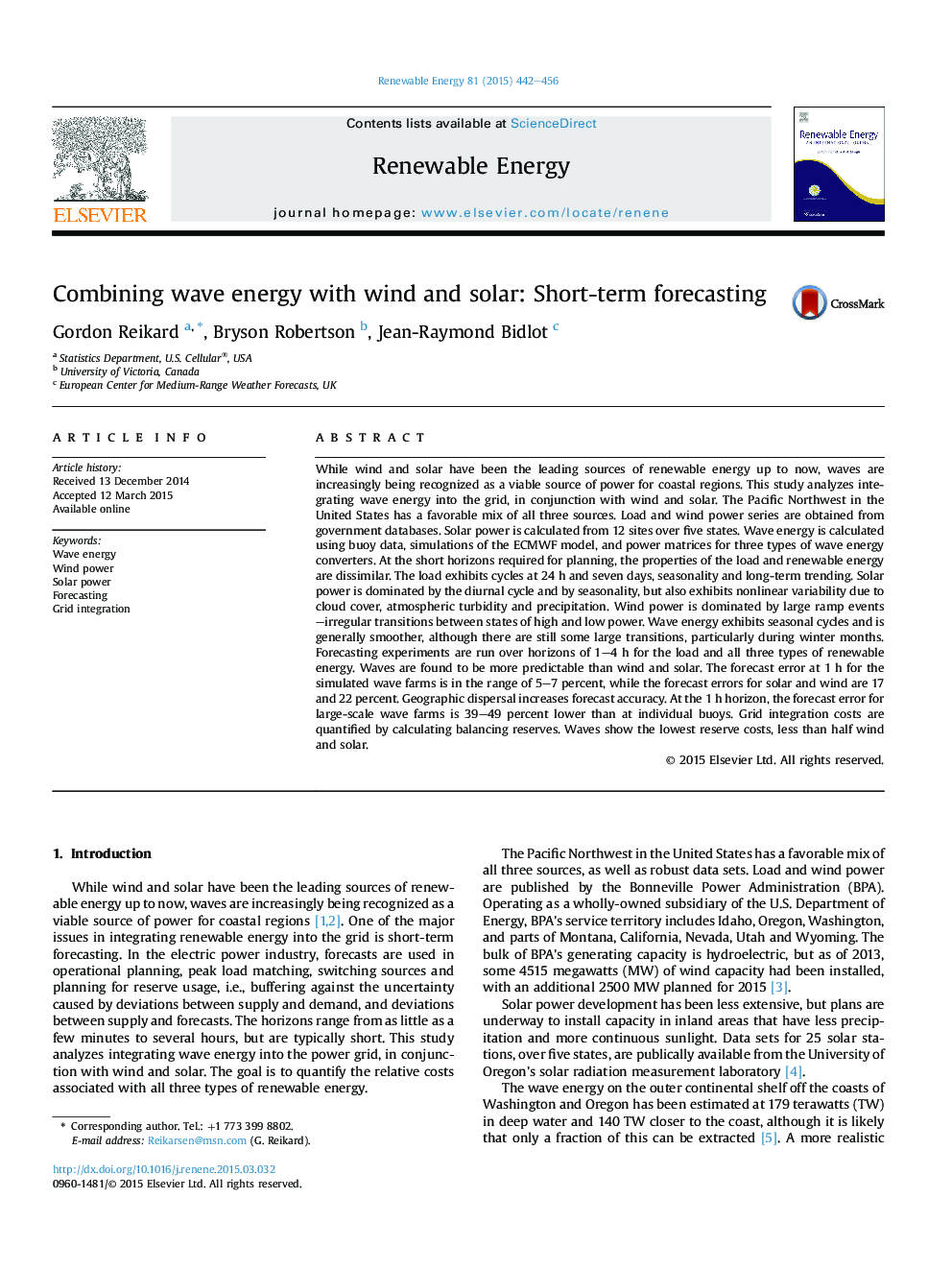| کد مقاله | کد نشریه | سال انتشار | مقاله انگلیسی | نسخه تمام متن |
|---|---|---|---|---|
| 6767098 | 512456 | 2015 | 15 صفحه PDF | دانلود رایگان |
عنوان انگلیسی مقاله ISI
Combining wave energy with wind and solar: Short-term forecasting
ترجمه فارسی عنوان
ترکیب انرژی موج با باد و خورشید: پیش بینی کوتاه مدت
دانلود مقاله + سفارش ترجمه
دانلود مقاله ISI انگلیسی
رایگان برای ایرانیان
کلمات کلیدی
انرژی موج، قدرت باد، نیروی خورشیدی، پیش بینی، یکپارچه سازی گرید
موضوعات مرتبط
مهندسی و علوم پایه
مهندسی انرژی
انرژی های تجدید پذیر، توسعه پایدار و محیط زیست
چکیده انگلیسی
While wind and solar have been the leading sources of renewable energy up to now, waves are increasingly being recognized as a viable source of power for coastal regions. This study analyzes integrating wave energy into the grid, in conjunction with wind and solar. The Pacific Northwest in the United States has a favorable mix of all three sources. Load and wind power series are obtained from government databases. Solar power is calculated from 12 sites over five states. Wave energy is calculated using buoy data, simulations of the ECMWF model, and power matrices for three types of wave energy converters. At the short horizons required for planning, the properties of the load and renewable energy are dissimilar. The load exhibits cycles at 24Â h and seven days, seasonality and long-term trending. Solar power is dominated by the diurnal cycle and by seasonality, but also exhibits nonlinear variability due to cloud cover, atmospheric turbidity and precipitation. Wind power is dominated by large ramp events-irregular transitions between states of high and low power. Wave energy exhibits seasonal cycles and is generally smoother, although there are still some large transitions, particularly during winter months. Forecasting experiments are run over horizons of 1-4Â h for the load and all three types of renewable energy. Waves are found to be more predictable than wind and solar. The forecast error at 1Â h for the simulated wave farms is in the range of 5-7 percent, while the forecast errors for solar and wind are 17 and 22 percent. Geographic dispersal increases forecast accuracy. At the 1Â h horizon, the forecast error for large-scale wave farms is 39-49 percent lower than at individual buoys. Grid integration costs are quantified by calculating balancing reserves. Waves show the lowest reserve costs, less than half wind and solar.
ناشر
Database: Elsevier - ScienceDirect (ساینس دایرکت)
Journal: Renewable Energy - Volume 81, September 2015, Pages 442-456
Journal: Renewable Energy - Volume 81, September 2015, Pages 442-456
نویسندگان
Gordon Reikard, Bryson Robertson, Jean-Raymond Bidlot,
